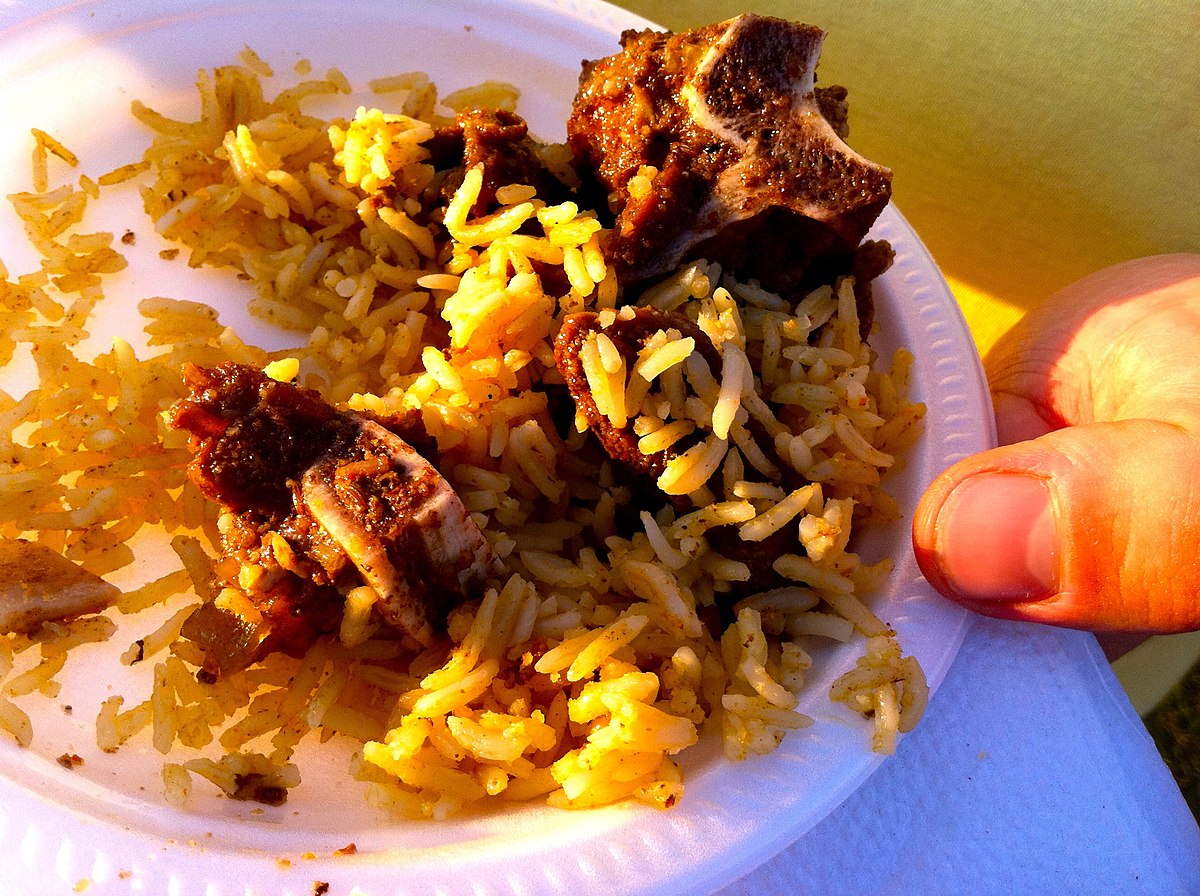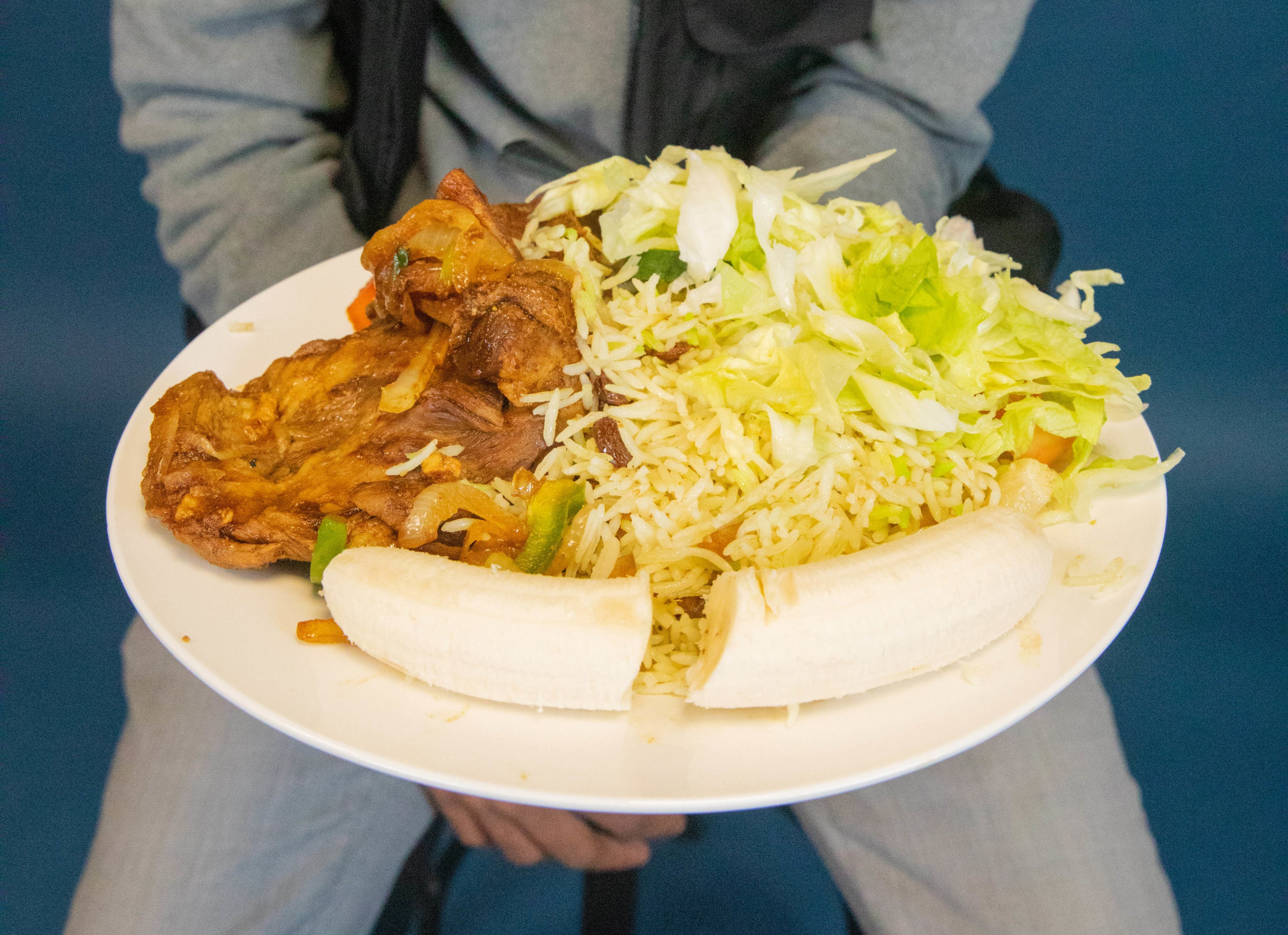Discovering Somali Food: From Classic Cuisines to Modern Culinary Wonders
Wiki Article
From Staple Cuisines to Unique Specialties: Unwinding the Diverse and Vibrant World of Somali Food

Conventional Somali Staples
If you intend to experience genuine Somali food, you should regularly enjoy typical Somali staples. These staples form the structure of Somali cooking and showcase the rich social heritage of the Somali individuals. One such staple is the popular flatbread referred to as "injera." Made from a fermented batter of teff flour, injera is a versatile and important component of Somali meals. It is often used as an utensil to scoop up stews and sauces, adding an unique appearance and flavor to every bite.One more staple is "baasto," a savory pasta dish that is frequently appreciated in Somali houses. Baasto is commonly made with pastas or linguine noodles, cooked till tender and after that combined with a great smelling sauce made from tomatoes, onions, garlic, and a blend of typical Somali flavors (Somali food). This dish is frequently offered with a side of maraq, a pleasantly spiced broth that adds deepness and intricacy to the meal
Last but not least, "bariis" or rice is a staple that is deeply ingrained in Somali food. Bariis is often prepared with aromatic seasonings such as cardamom, cinnamon, and cloves, providing it a delightful fragrance and taste. It is frequently offered with a variety of meat or veggie stews, developing a gratifying and hearty meal.
Flavors From the Sea: Somali Seafood Delicacies

One popular fish and shellfish special is Isku-dheh karis, a velvety curry made with fish, coconut milk, and a collection of seasonings. The recipe is usually offered with aromatic basmati rice or a flatbread called injera. An additional preferred is Muqmad, a dried fish meal that is usually delighted in as a treat or made use of as a component in various other dishes. The fish is healed with salt and spices, providing it a slightly appetizing and full-flavored flavor.
Lahoh with maraq is a conventional Somali pancake offered with a rich fish and shellfish stew. The pancake is soft and spongy, while the stew is made with a combination of prawns, fish, and vegetables, simmered in a tasty brew. This dish is a true depiction of the seaside tastes discovered in Somali cuisine.
Whether it's grilled lobster, spicy shrimp curry, or tasty calamari, Somali seafood delicacies are a must-try for any seafood fan. The freshness of the active ingredients, integrated with the fragrant flavors, develop a symphony of flavors that will certainly carry your taste to the shores of Somalia. Don't miss out on the chance to relish the sea's plentiful prizes when discovering Somali food.
Exotic Spices and Aromatic Herbs
Discover the alluring array of flavors in Somali cuisine with using an excellent selection of aromatic natural herbs and exotic seasonings. Somali food is known for its strong and vivid flavors, and these seasonings and herbs play a vital function in producing the unique preference that sets Somali food apart.One of the most frequently used flavors in Somali food preparation is cumin. Its natural and warm taste adds depth to dishes like rice, stews, and meat preparations. Somali food. Turmeric, with its lively yellow color and light flavor, is one more staple in Somali food. It is utilized to improve the taste and look of rice, soups, and meat dishes.
Cardamom, a fragrant flavor with a tip of citrus, is also commonly utilized in Somali food preparation. It includes a unique and fragrant touch to both sweet and mouthwatering dishes. Various other prominent spices include cinnamon, cloves, and coriander, which are used to add heat and complexity to numerous recipes.
Aromatic natural herbs like mint, parsley, and cilantro are also vital ingredients in Somali cuisine. They are used to garnish dishes, imparting quality and a ruptured of taste. These natural herbs are frequently added to sauces, salads, and meat recipes, improving the general taste and aroma.
With making use of these exotic spices and aromatic natural herbs, Somali cuisine offers a alluring and truly unique dining experience. The mix of tastes develops a harmonious balance that is both unforgettable and gratifying. Whether you're appreciating a typical Somali stew or a savory rice recipe, the flavors and herbs used in Somali food preparation are certain to leave a lasting perception on your taste buds.
Impacts From Arab, Indian, and European Cuisines
Arab, Indian, and European foods have actually substantially affected the vivid and diverse globe of Somali food. Over the centuries, Somalia's strategic area on the Indian Ocean profession courses has enabled an abundant exchange of cultural and culinary practices with surrounding Arab and Indian areas, along with European colonial powers. These interactions have left a long lasting influence on the Somali cooking landscape, causing a blend of flavors and strategies that make Somali cuisine absolutely unique.
One of the most significant influences can be resource seen in the comprehensive use spices in Somali cooking. Arab and Indian spices such as cumin, coriander, cardamom, cinnamon, and cloves are commonly used to include deepness and intricacy to Somali recipes. The intro of these spices has not just boosted the tastes but has actually additionally contributed to the aromatic and vibrant nature of Somali food.
European influences can be traced back to the colonial era when Somalia was under the control of numerous European powers, including the Portuguese, British, and Italians. These early american communications brought cooking approaches and brand-new ingredients to Somalia. Pasta dishes like "baasto" (Somali pasta) and "sabayad" (a Somali flatbread) are clear instances of Italian influence.
Commemorating Food in Somali Culture
Celebrating food is an integral component of Somali society, where public dishes and cheery gatherings are valued practices. Whether it's a wedding celebration, a religious holiday, or a basic family members celebration, Somali people take enormous pride in their cuisine and use it as a means to commemorate and reveal their cultural identification.
Along with the delicious food, the act of sharing a meal is deeply significant in Somali culture. It signifies hospitality, generosity, and the relevance of community. Somali food. Sitting down with each other, commonly on a mat or a common plate, and breaking bread fosters a feeling of unity and reinforces bonds between household and buddies
Furthermore, food is additionally a method to remember and honor liked ones that have actually passed away. Throughout special celebrations, such as the Islamic holiday of Eid al-Fitr, Somalis prepare typical sweets called xalwo as a way of commemorating their forefathers and maintaining their memory active.
Conclusion
Finally, Somali food offers a vivid and diverse cooking experience. From traditional staples to unique specialties, the food is rich in flavors and showcases the country's cultural impacts. With a selection of fish and shellfish specials, fragrant natural herbs, and flavors from Arab, Indian, and European cuisines, Somali food is a celebration of customs and flavors. Whether you're exploring the staple dishes or venturing right into the world of unique specializeds, Somali food is sure to entice your preference buds.If you desire to experience genuine Somali cuisine, you must regularly delight in standard Somali staples.To really submerse yourself in the diverse and dynamic globe of Somali food, you must commonly delight in the elegant flavors of Somali seafood specials. Whether you're enjoying a standard Somali stew imp source or a tasty rice recipe, the seasonings and natural herbs used in Somali food preparation are certain to leave an enduring impact on your taste buds.
These interactions have actually left a lasting effect on the Somali cooking landscape, resulting in a fusion of flavors and techniques that make Somali cuisine genuinely one-of-a-kind.
Pasta dishes like "baasto" (Somali pasta) and "sabayad" (a Somali flatbread) are clear instances of Italian impact.
Report this wiki page